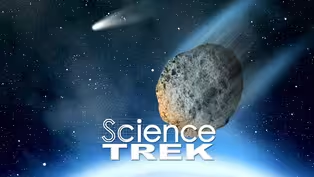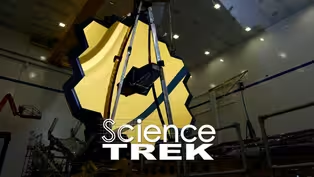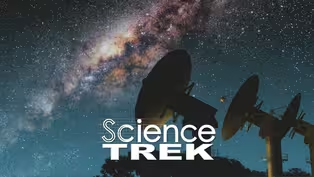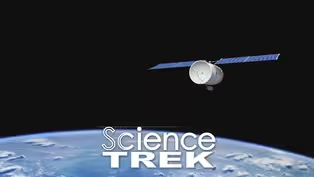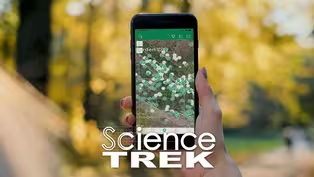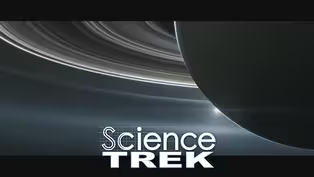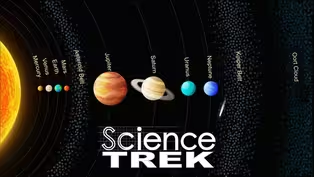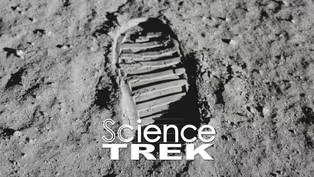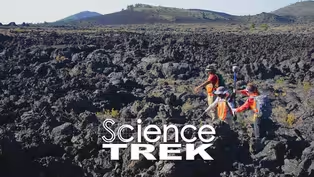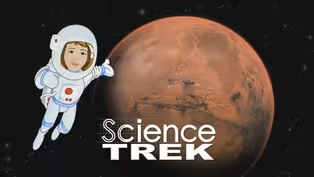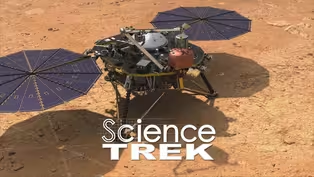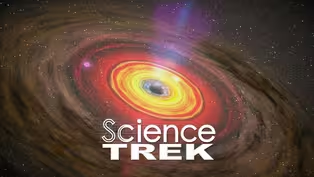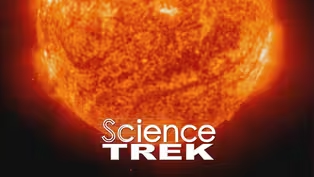
Astronomy: What is the JWST?
Special | 6m 53sVideo has Closed Captions
The James Webb Space Telescope could bring amazing discoveries.
The James Webb Space Telescope is the most expensive telescope ever built. Find out more about how it was constructed and what it could mean for advances into our understanding of the Universe.
Problems playing video? | Closed Captioning Feedback
Problems playing video? | Closed Captioning Feedback
Science Trek is a local public television program presented by IdahoPTV
Major Funding by the Laura Moore Cunningham Foundation and the Idaho National Laboratory. Additional Funding by Sparklight, the Friends of Idaho Public Television and the Corporation for Public Broadcasting.

Astronomy: What is the JWST?
Special | 6m 53sVideo has Closed Captions
The James Webb Space Telescope is the most expensive telescope ever built. Find out more about how it was constructed and what it could mean for advances into our understanding of the Universe.
Problems playing video? | Closed Captioning Feedback
How to Watch Science Trek
Science Trek is available to stream on pbs.org and the free PBS App, available on iPhone, Apple TV, Android TV, Android smartphones, Amazon Fire TV, Amazon Fire Tablet, Roku, Samsung Smart TV, and Vizio.
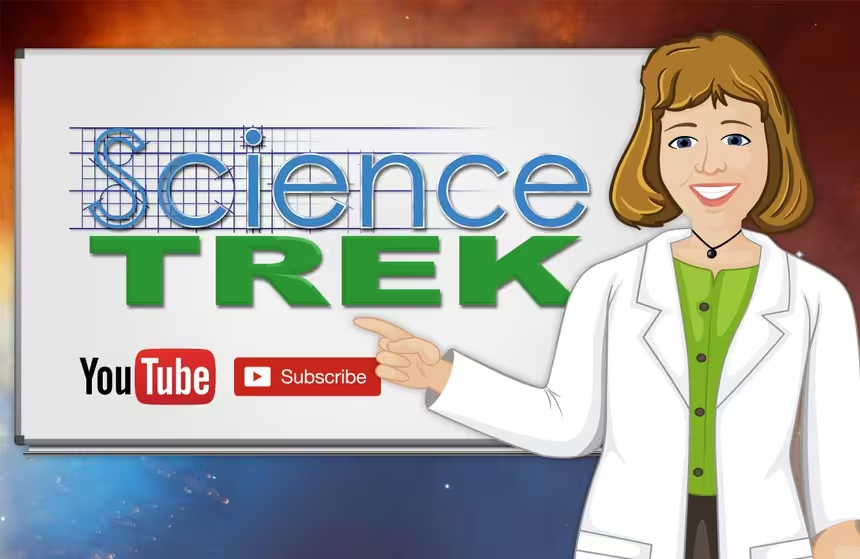
Science Trek
Science Trek is a place where parents, kids, and educators can watch short, educational videos on a variety of science topics. Every Monday Science Trek releases a new video that introduces children to math, science, technology, engineering, and math (STEM) career potentials in a fun, informative way.More from This Collection
Ever since human first looked up in the night sky and wondered what was out there, we have been trying learn more about outer space. Explore the planets. Study asteroids and comets and find out what it is like to train to be an astronaut.
Video has Closed Captions
Asteroids and comets can teach us about the beginnings of the universe. (6m 20s)
Exoplanets: Finding Life With the JWST
Video has Closed Captions
Will biosignatures help us find life on exoplanets? (5m 26s)
Video has Closed Captions
Learn what astronomers learned through the ages. (5m 52s)
Satellites: The Story of Satellites
Video has Closed Captions
What is a satellite and how do human-made satellites study the Earth and the Universe. (5m 32s)
Satellites: Using Satellites to Find Treasure
Video has Closed Captions
GPS satellites help us navigate around the world and can help us find treasure. Learn how. (6m 22s)
Planets: What Exactly is a Planet?
Video has Closed Captions
How do you decide what a planet actually is? (5m 29s)
Planets: Tour the Solar Neighborhood
Video has Closed Captions
Take a tour of our Solar System and learn about planets and much more. (6m 3s)
Video has Closed Captions
Learn more about the Earth's only natural satellite. (5m 15s)
The Moon: Can You Visit the Moon in Idaho?
Video has Closed Captions
Why did the Apollo astronauts train in Idaho? (6m 7s)
Providing Support for PBS.org
Learn Moreabout PBS online sponsorshipJoan Cartan-Hansen, Host: It's taken decades and is the most expensive telescope ever built.
But what exactly do scientists hope to find with the James Webb Space Telescope?
[MUSIC] Cartan-Hansen: Telescopes on earth have helped us observe the stars.
But the earth's atmosphere can distort or limit what we can see.
So, in 1990, we launched the Hubble telescope.
It's captured images deep in space.
But because it's in low earth orbit, it too has some limits on what it can view.
So in 1996, scientists from NASA, the European Space Agency and the Canadian Space Agency decided to build the next generation telescope, now called the James Webb Space Telescope or JWST.
They wanted that telescope to capture infrared light.
Maurice Te Plate is a systems engineer on the James Webb Space Telescope project.
Maurice Te Plate: Space itself basically expanded, and that basically also means that the wavelength of the light got longer.
And as such light, that was originally emitted as visual light, light that you and I can see with our human eyes, that light became infrared light.
And in order to measure it, we cannot really use the current observatories.
We need an observatory that is really optimized for this particular part of the wavelength range.
And that's an infrared observatory.
Cartan-Hansen: So, engineers began building the telescope, designing step by step while solving a whole bunch of problems.
First, the light waves coming from the farthest reaches of the universe would be very dim.
In order to catch that very dim light, the telescope would need a very big mirror.
The mirror on the James Webb Space Telescope is made up of 18 panels and is more than 21 feet across.
Te Plate: And in order to make this telescope work, we need to cool it down to really cool temperatures, because if we wouldn't do that, the telescope would only see it, it would basically see its own glow.
It would see itself glowing and we don't want that.
So therefore we cool it down, you know, we go to like really low temperatures and then only then we can measure those super weak infrared signals.
Cartan-Hansen: How cold?
How about minus 450 degrees Fahrenheit, colder than the surface of Pluto.
To keep the cold side of the telescope really cold, the telescope uses a giant heat shield.
The shield is about the size of a giant tennis court and keeps the sun and heat from the earth and other space objects away from the telescope.
This heat shield needed to be light, durable and, like all other parts of the telescope had to do one other thing.
Te Plate: So it's so big that it doesn't fit in even the world's largest rockets, so it needs to be folded up.
And then in space, it will like unfold itself, you know, like a gigantic piece of origami.
Cartan-Hansen: The James Webb Space Telescope was launched on December 25th, 2021 and spent its first 30 days unfolding and traveling to where it will orbit the earth.
Te Plate: We're sending it to this place called a second Lagrange point, which is about a million miles away from the earth, which is similar to four times the distance from the earth to the moon.
So it's really, really, really far away.
And we do that mainly for thermal reasons.
We need to be far away from the earth, far away from the sun.
And that's what we do by sending it to the second Lagrange point.
Cartan-Hansen: Once in place and after a several-month-testing-period.
The James Webb Space Telescope should start sending back images.
Te Plate: We wanna look at the really early universe, so that's gonna be super exciting.
You know, this is like uncharted terrain.
We've never done that.
It's gonna be the first time that we'll see that.
So I'm super interested in those first results.
Cartan-Hansen: Te Plate explains that because light travels at a finite speed, the speed of light, looking at images so far away is kind of like looking back in time.
Te Plate: So when I'm looking at sun, it's basically I'm looking at the sun, how it was like eight minutes ago because the light takes some time to get to my eyes.
So when I'm looking outside and I'm looking at stars, that light has been traveling for millions sometimes billions of years.
So you can compare the universe to a photo book, uh, that you and I have, you know, it has like pictures from when, uh, we were like really young babies, toddlers, then young children and then teenagers and, you know, eventually old men or women.
With Hubble, we've looked really, really deep into the universe.
So we've looked very now, far back in time, really billions and billions of years.
But if we go back to that comparison of the photo book, we haven't quite seen those baby pictures, those toddler pictures, we've seen all the pictures, you know, when the universe was a little older, but we've never seen the universe at a very young stage.
And that's exactly what Webb's gonna do.
Cartan-Hansen: Unlike the Hubble telescope, if anything goes wrong, the James Webb Space Telescope is so far out in space that we can't repair it.
Engineers thought of that and put in duplicate systems that might be able to take over and fix any problems.
The James Webb Space Telescope has about 10 years' worth of fuel to keep it going.
After that it will go dark.unless we can invent a way to refuel it.something engineers are already working on.
Te Plate says this telescope is a new milestone in the history of space exploration.
Te Plate: And I'm also super excited about what we're gonna do, uh, regarding these exo-planets, you know, maybe we'll find planets that somehow are like similar to earth.
You know, maybe we find atmospheres that have like a similar molecular composition, who knows?
But what I think is most exciting is that we we'll actually, uh, get answers to questions that we currently don't even have.
So the surprises, that is what I mean.
I mean like the Hubble, you know, the big discoveries were like really big surprises, you know, the stuff that nobody ever thought of.
And I hope that James Webb will be able to do something really similar.
Cartan-Hansen: If you want to learn more about astronomy, check out the science trek website.
You'll find it at science trek dot org.
[MUSIC] ANNOUNCER: Presentation of Science Trek on Idaho Public Television is made possible through the generous support of the Laura Moore Cunningham Foundation, committed to fulfilling the Moore and Bettis family legacy of building the great state of Idaho.
By the Idaho National Laboratory, mentoring talent and finding solutions for energy and security challenges, by The Friends of Idaho Public Television and by the Corporation for Public Broadcasting.
Astronomy: Black Holes Sized Up
Video has Closed Captions
Clip: Special | 1m 4s | If a black hole is so strong not even light can escape, how do we see them? (1m 4s)
Astronomy: What’s Your Color, Star?
Video has Closed Captions
Clip: Special | 1m 4s | Red, yellow or blue, what color is your favorite star? (1m 4s)
Providing Support for PBS.org
Learn Moreabout PBS online sponsorship
- Science and Nature

Explore scientific discoveries on television's most acclaimed science documentary series.

- Science and Nature

Capturing the splendor of the natural world, from the African plains to the Antarctic ice.












Support for PBS provided by:
Science Trek is a local public television program presented by IdahoPTV
Major Funding by the Laura Moore Cunningham Foundation and the Idaho National Laboratory. Additional Funding by Sparklight, the Friends of Idaho Public Television and the Corporation for Public Broadcasting.
